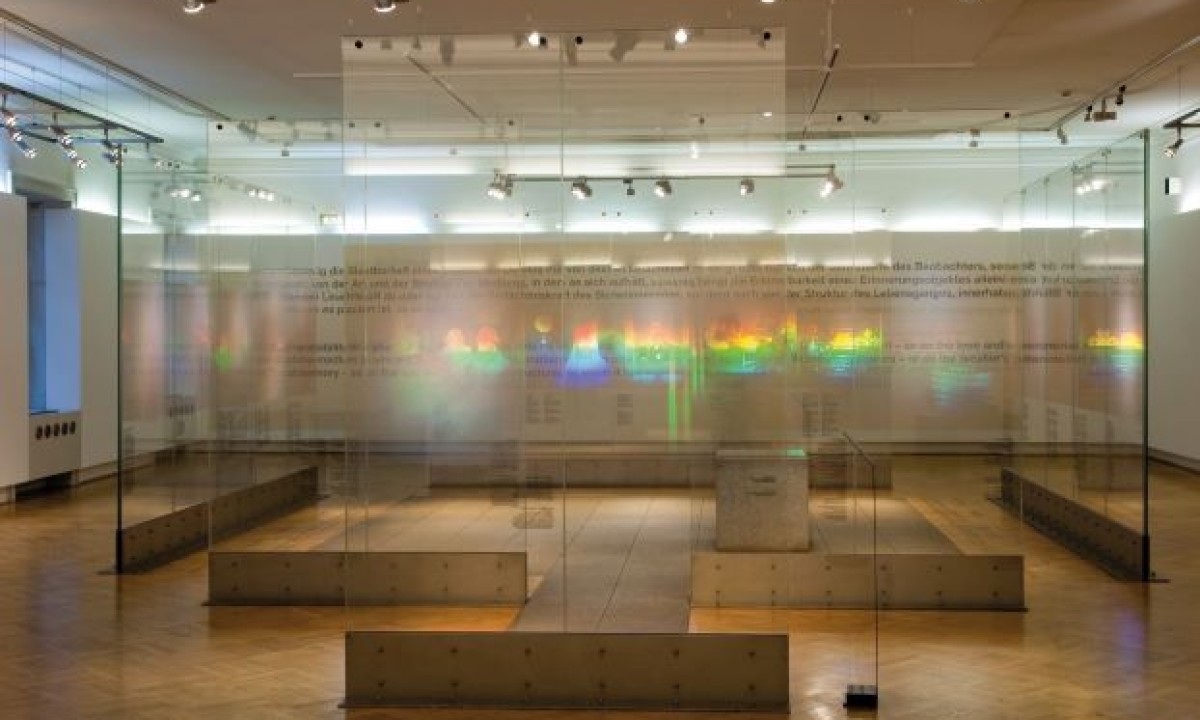30. July 2025
director's column
Holograms with History
by Barbara Staudinger
Before 2011, visitors to the permanent exhibition of the Jewish Museum in Dorotheergasse were greeted on the second floor by a walk-in installation: a total of 21 glass panels distributed throughout the room displayed—or concealed, depending on the angle—holograms of objects, images, and photographs representing the Jewish history of Vienna. Curated by then-chief curator Felicitas Heimann-Jelinek, the installation was, according to critics, perhaps not easily accessible to every visitor. However, what it conveyed to all was that there was something about Jewish history that eluded understanding—something fleeting, translucent, and difficult to grasp. Those who left the exhibition may have felt they hadn’t received enough tangible information about Vienna’s Jewish history, but what they certainly took with them was a sense of loss—a loss that cannot be undone. This linking of past and present is, in fact, more than one might expect to gain from a visit to a permanent exhibition.
The holograms addressed the rupture that runs through every Jewish museum: the very existence of Jewish museums after World War II is a consequence of the Shoah. Without it, most of the objects in the historical collection would not be in a museum but in their original places of use—in synagogues, associations, households. Thus, the Shoah is inscribed in most historical objects—they also tell a story of persecution and destruction. When these objects were made or still in use, their owners could not have known this, of course. No one knows what the future holds. And Jakob Bronner, the curator of the first Jewish Museum in Vienna, who died in exile in Israel in 1958, didn’t know either when he began collecting the first objects. But when we look at these objects today, we cannot ignore what we know. We know what happened, and we often also know what happened to the owners of the objects—at least where they are known. Making this layer of knowledge, which overlays every object, tangible is the challenge for every permanent exhibition in a Jewish museum—or at least it should be.
The holograms of the old permanent exhibition at the Jewish Museum were important for precisely this reason, even if they now seem outdated: because they didn’t allow us to pretend we didn’t know what had happened. Because they constantly pointed to what was lost and refused to let us look at history without thinking of the Shoah. That was—and in some ways still is—new in the world of Jewish museums. Jewish museums still struggle with not wanting to be Holocaust museums, yet having collections that largely only became collections because of the Shoah. For a long time—and still to some extent today—the solution was simply not to address this fact, to present objects detached from their history of persecution—because contemporaries wouldn’t have known what the future would bring. But it’s not that simple. In fact, this is the dilemma of Jewish museums.
For the Jewish Museum Vienna, I hope for a permanent exhibition that makes visible the filter through which we view the Jewish history of Vienna today, with the knowledge of the Shoah. At the same time, it should be able to tell stories that are not only about the greatest rupture in Jewish history. It should aim to be intellectually engaging without being difficult to access. It should differentiate without becoming overly complex… As you can see, this is no easy task, but a very exciting one. What the result will be, you can see starting in late 2027 in the new permanent exhibition of the Jewish Museum.
During the renovation work that preceded the new permanent exhibition at Palais Eskeles, the 21 holograms were destroyed—many will still remember the media outcry and the museum’s attempt at damage control. At the time, the museum stated that a second set of the holograms, intended for international presentations, still existed. That these were made of plexiglass rather than glass—and thus not built to last—was not mentioned. The museum, which is actually an institution dedicated to preserving history, has thereby lost a part of its own history.
